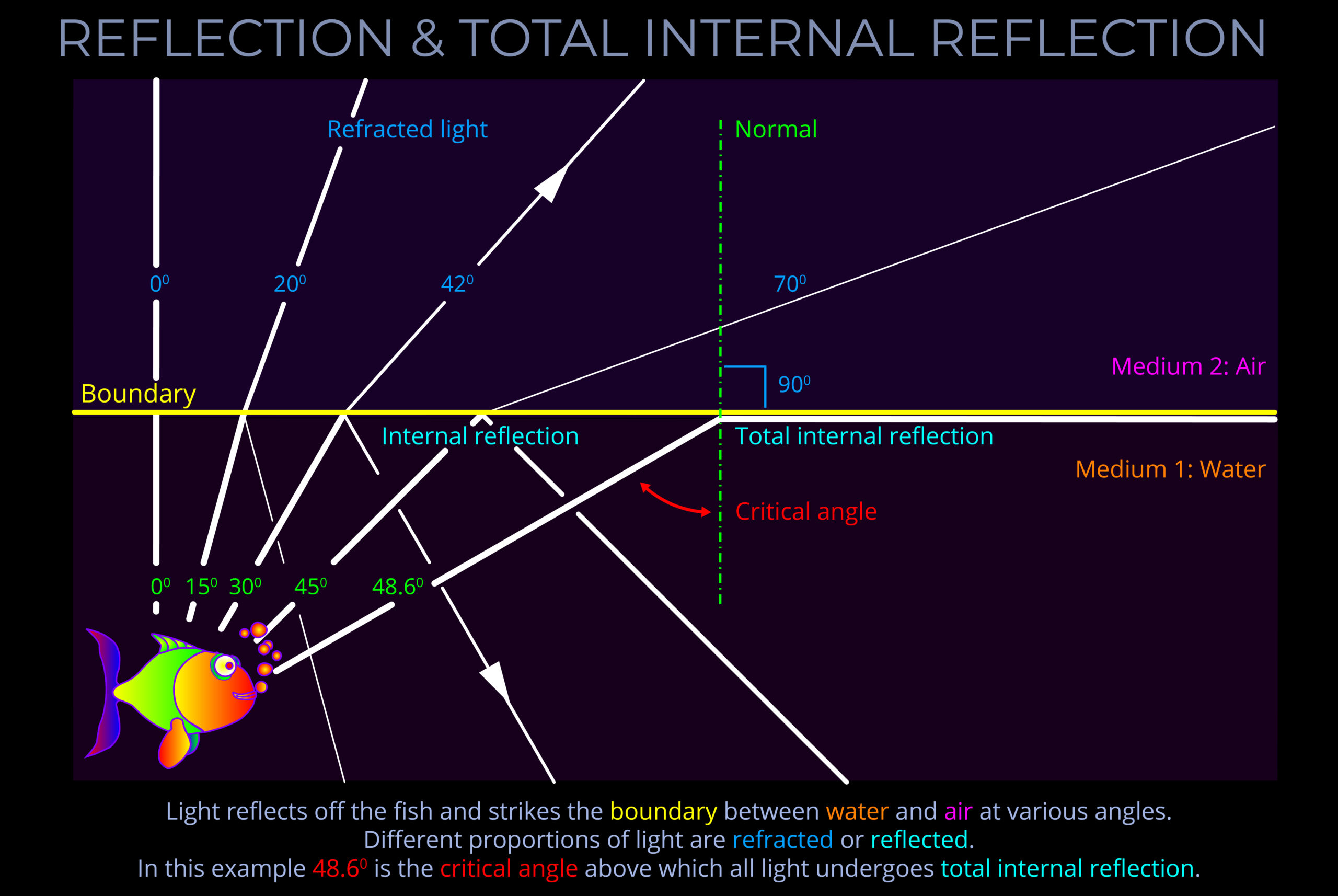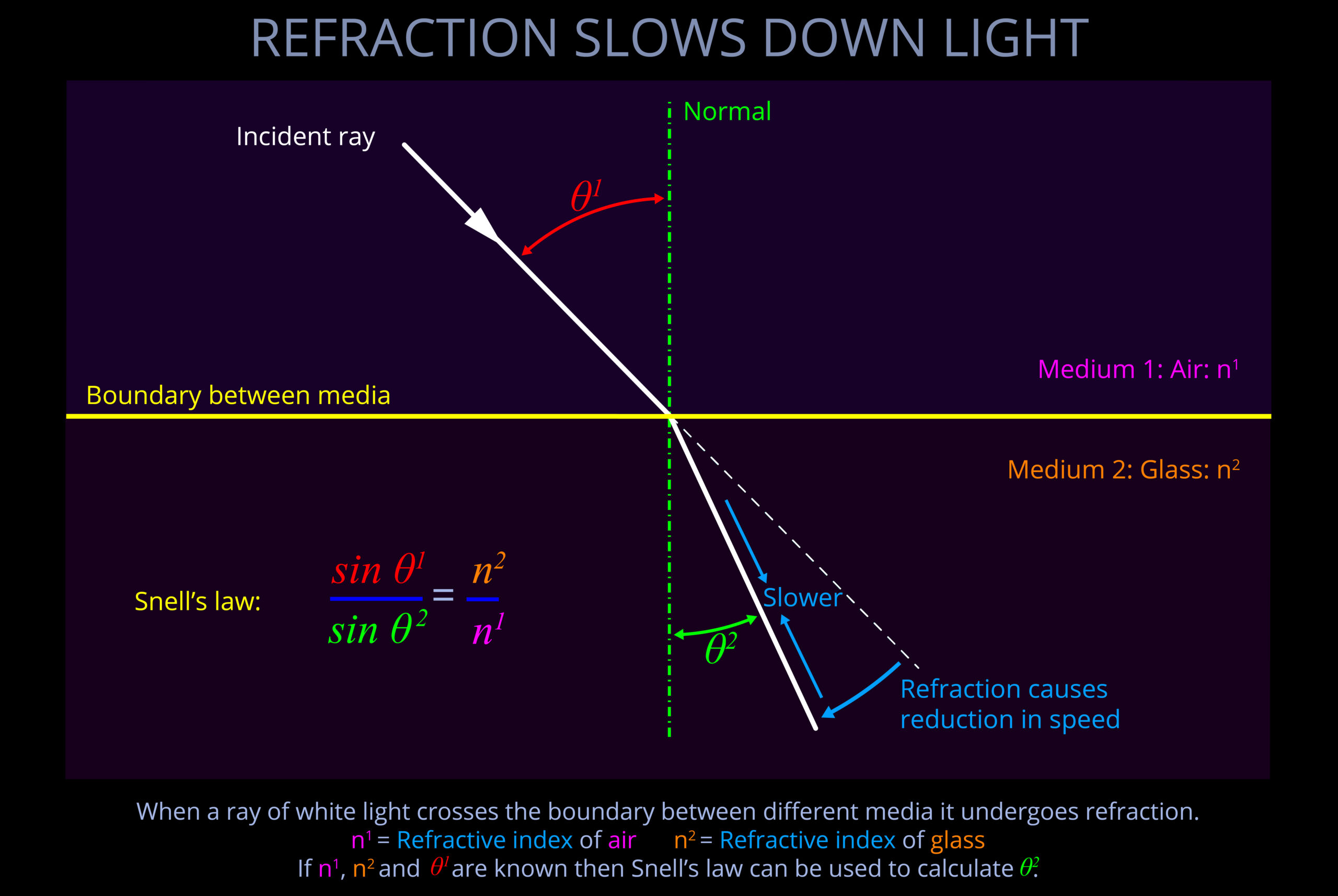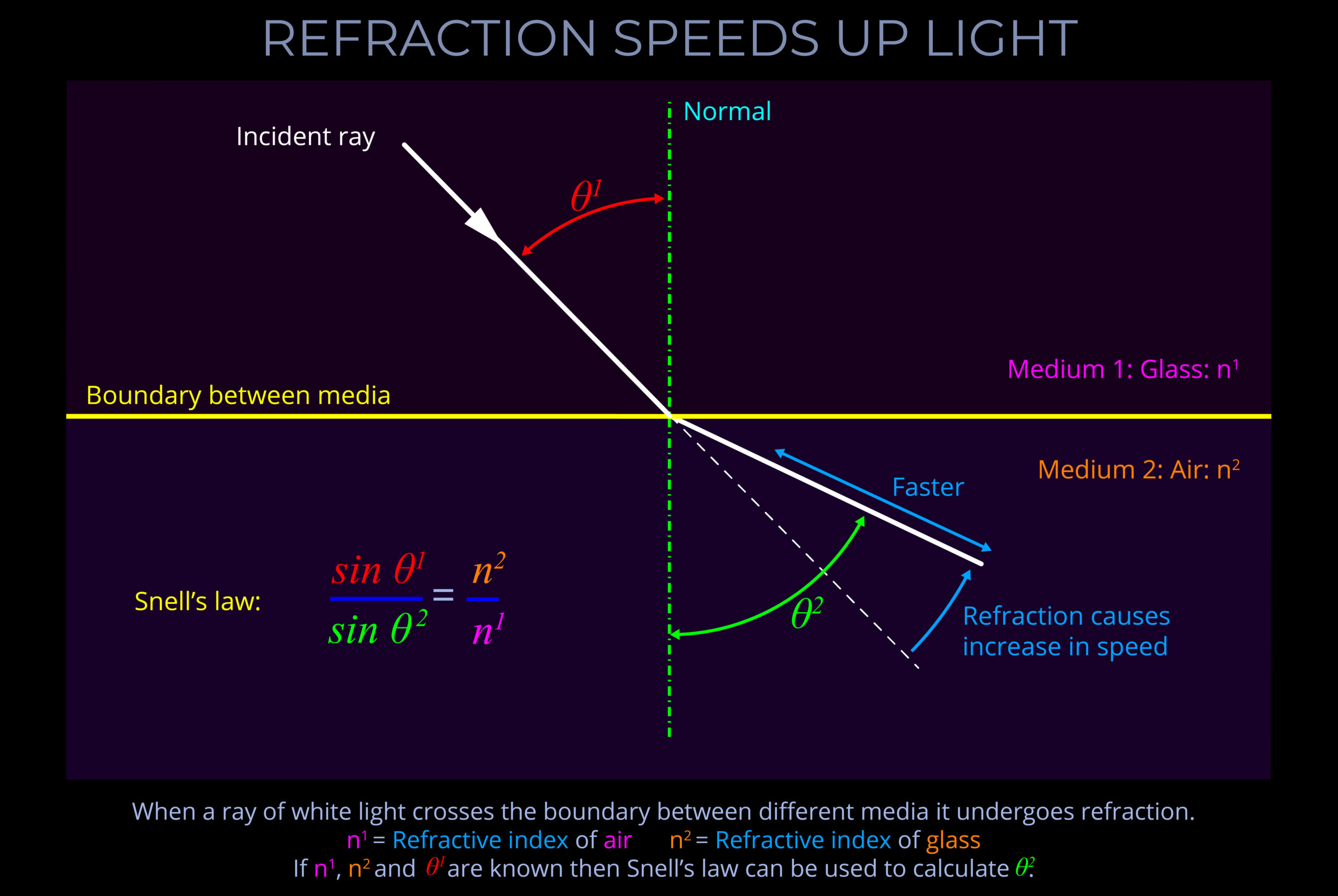The critical angle for light approaching the boundary between two different media is the angle of incidence above which the light is totally internally reflected.
- Internal reflection is a common phenomenon that occurs with all types of electromagnetic radiation, including visible light.
- Internal reflection takes place when light reaches the boundary between a medium with a higher refractive index and a medium with a lower refractive index.
- So, internal reflection takes place when light travels from glass to air at an angle greater than the critical angle, but not when it travels from air to glass.
- The amount of internal reflection depends upon the angle of incidence as light approaches the boundary. Here are the different outcomes that result from different angles of incidence:
- At 0 degrees angle of incidence, there is no internal reflection; the light passes straight through the boundary without deviation.
- As the angle of incidence increases, more and more light is internally reflected at the boundary. This means that less is refracted and so progressively less crosses the boundary into the medium with the lower refractive index.
- At the critical angle, the light grazes the boundary, and all of it is internally reflected, resulting in no refraction into the second medium.
- Beyond the critical angle, total internal reflection occurs, and the light is entirely reflected back into the first medium.
- Here is an example. If light travels from water to air where the critical angle is about 48.6 degrees.
- This means that if light reflects off a fish in a fish tank and then strikes the surface of the water at an angle of less than 48.6 degrees, the angle of incidence determines how much light is internally reflected.
- If light reflects off a fish in a fish tank and then strikes the surface of the water at an angle of 48.6 degrees or greater, it will be totally internally reflected and no light will pass out of the water and into the air.
- In reality, light is usually partially refracted and partially reflected because of irregularities in the surface at the boundary. This causes differences in the angle of incidence at different points across the boundary.
The critical angle for light approaching the boundary between two different media is the angle of incidence above which it undergoes total internal reflection. The critical angle is measured with respect to the normal at the boundary between two media.
- Internal reflection is a common phenomenon so far as visible light is concerned but occurs with all types of electromagnetic radiation.
- Internal reflection takes place when light travelling through a medium:
- Strikes the boundary with another medium that has a lower refractive index
- At an angle greater than the critical angle
- For example, internal reflection takes place when light reaches air from glass and at an angle greater than the critical angle.
- In normal conditions, light is partially refracted and partially reflected because of irregularities in the surface at the boundary.
- It is only when the angle of incidence is greater than the critical angle for all points along a boundary that total internal reflection takes place.


